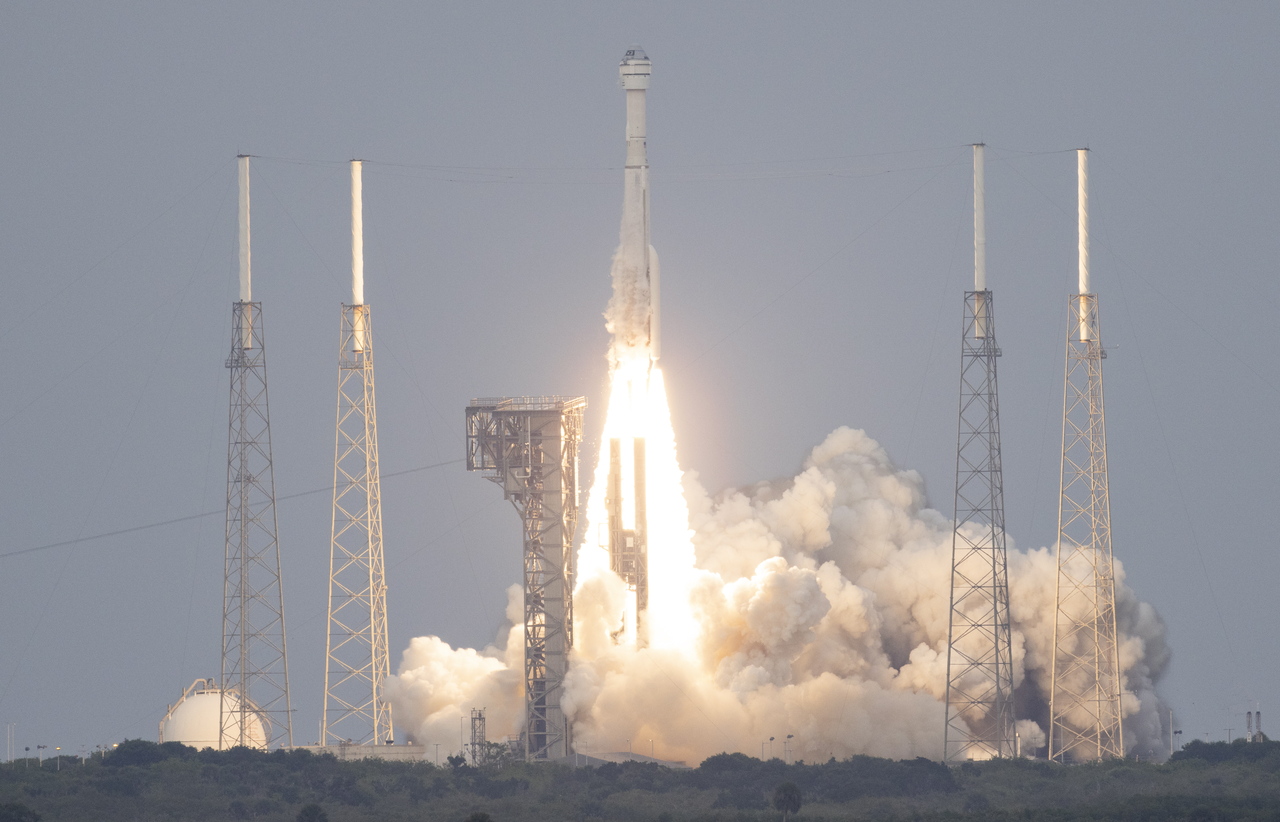Boeing's Starliner space capsule launched on key test flight to orbit
Sign up now: Get ST's newsletters delivered to your inbox

A United Launch Alliance Atlas V rocket with Boeing’s CST-100 Starliner spacecraft launches on May 19, 2022.
PHOTO: EPA-EFE
Follow topic:
CAPE CANAVERAL, FLORIDA (REUTERS) - Boeing's new Starliner capsule was launched on Thursday (May 19) on a do-over uncrewed test flight bound for the International Space Station, aiming to deliver the company a much-needed success after more than two years of delays and costly engineering setbacks.
The gumdrop-shaped CST-100 Starliner blasted off shortly before 7pm EDT (7am Friday Singapore time) from the Cape Canaveral Space Force Station in Florida, carried aloft atop an Atlas V rocket furnished by the Boeing-Lockheed Martin joint venture United Launch Alliance (ULA).
About 30 minutes after lift-off, the Starliner reached its intended preliminary orbit, after separating from the upper-stage Atlas V rocket and flying on its own power toward a trajectory for later rendezvous with the space station.
It was at that point in Starliner's previous test flight in late 2019 that a software glitch effectively foiled the spacecraft's ability to reach the space station.
If all goes as planned, the capsule will arrive at the station in about 24 hours and dock with the research outpost orbiting some 400km above Earth on Friday evening.
The Boeing craft is to spend four to five days attached to the space station before undocking and flying back to Earth, with a parachute landing cushioned by airbags on the desert floor of White Sands, New Mexico.
A successful mission will move the long-delayed Starliner a major step closer to providing NASA with a second reliable means of ferrying astronauts to and from the space station.
Since resuming crewed flights to orbit from American soil in 2020, nine years after the space shuttle program ended, the US space agency has had to rely solely on the Falcon 9 rockets and Crew Dragon capsules from Elon Musk's company SpaceX to fly NASA astronauts.
Previously the only other option for reaching the orbital laboratory was by hitching rides aboard Russian Soyuz spacecraft.
"Having a backup is important to the country," NASA chief Bill Nelson told Reuters hours before liftoff.
Thursday's launch also comes at a pivotal time for Boeing as the Chicago-based company scrambles to climb out of successive crises in its jetliner business and its space-defence unit. The Starliner programme alone has forced Boeing to take US$595 million (S$822 million) in charges since the failure of its first uncrewed test flight to orbit in 2019.
Payload & model passenger
The Starliner was not flying to orbit empty. The capsule was carrying a research mannequin, whimsically named Rosie the Rocketeer, to collect data on crew cabin conditions during the journey, plus 227kg of cargo for delivery to the space station's crew - three NASA astronauts, a European Space Agency astronaut from Italy and three Russian cosmonauts Two of the US astronauts will have the task of boarding the capsule during Starliner's stay to take measurements of its interior environment and unload the supplies.
Thursday's launch marked a repeat of a 2019 test mission that failed to achieve a successful rendezvous with the space station because of a flight-software malfunction. Subsequent problems with Starliner's propulsion system, supplied by Aerojet Rocketdyne, led Boeing to scrub an attempt to launch the capsule last summer.
The spacecraft remained grounded for nine more months while the two companies sparred over what caused its fuel valves to stick shut and which firm was responsible for fixing them, as reported by Reuters last week.
Boeing says it has since resolved the glitch with a temporary workaround and plans to redesign the propulsion system's fuel valves system after this week's flight.
The Starliner was developed with a US$4.5 billion fixed-price NASA contract to provide the US space agency a second avenue to low-Earth orbit, along with SpaceX.
If the second uncrewed trip to orbit succeeds, Starliner could fly its first team of astronauts in autumn, though NASA officials caution that time frame could get pushed back.
NASA astronauts Butch Wilmore and Mike Fincke had been designated to fly Starliner's maiden crewed mission. But NASA officials, reluctant to tie down two astronauts to a flight whose launch date is uncertain, said on Wednesday the mission could end up carrying at least two of any of the four astronauts now training to test-fly Starliner.

